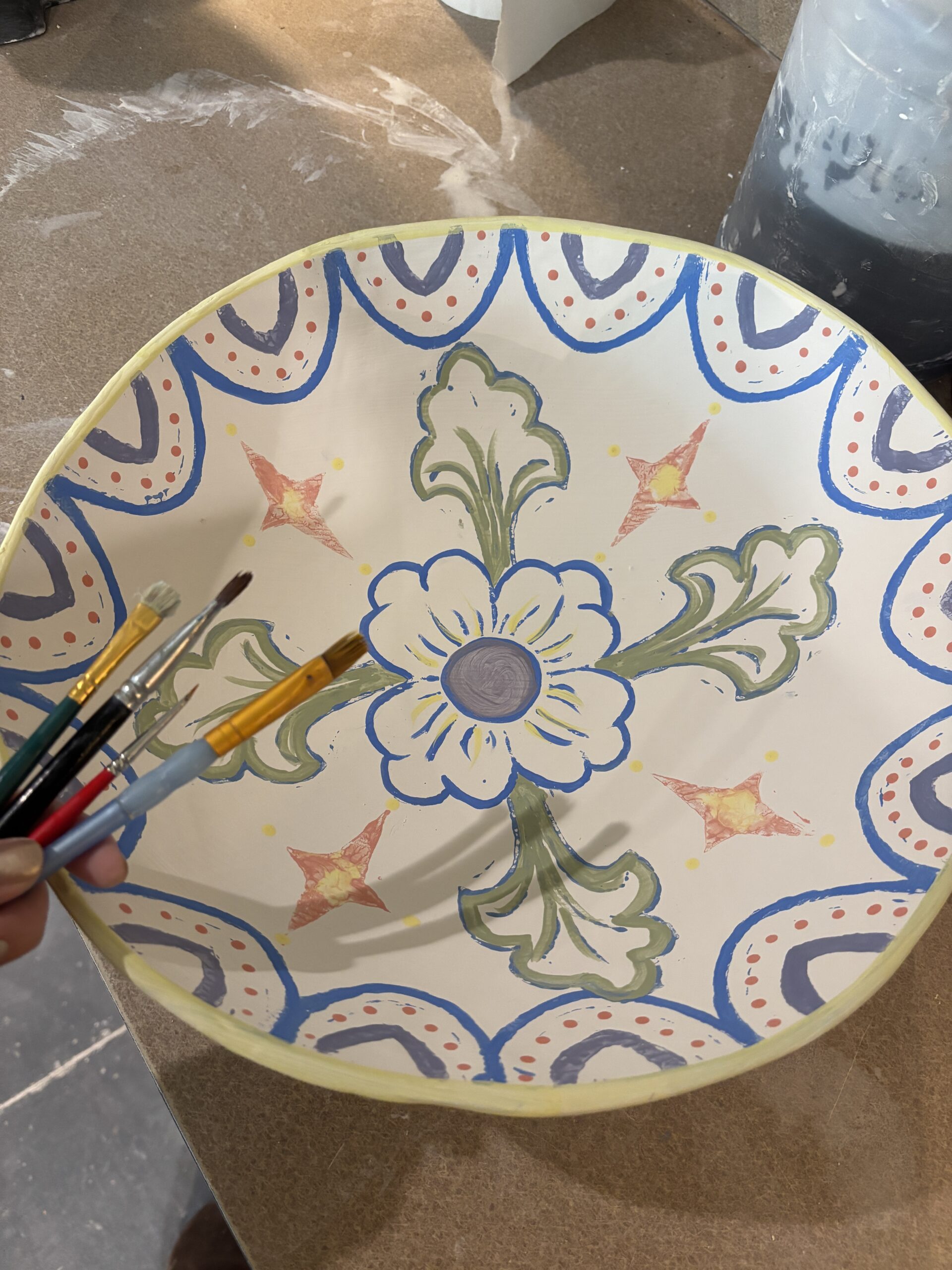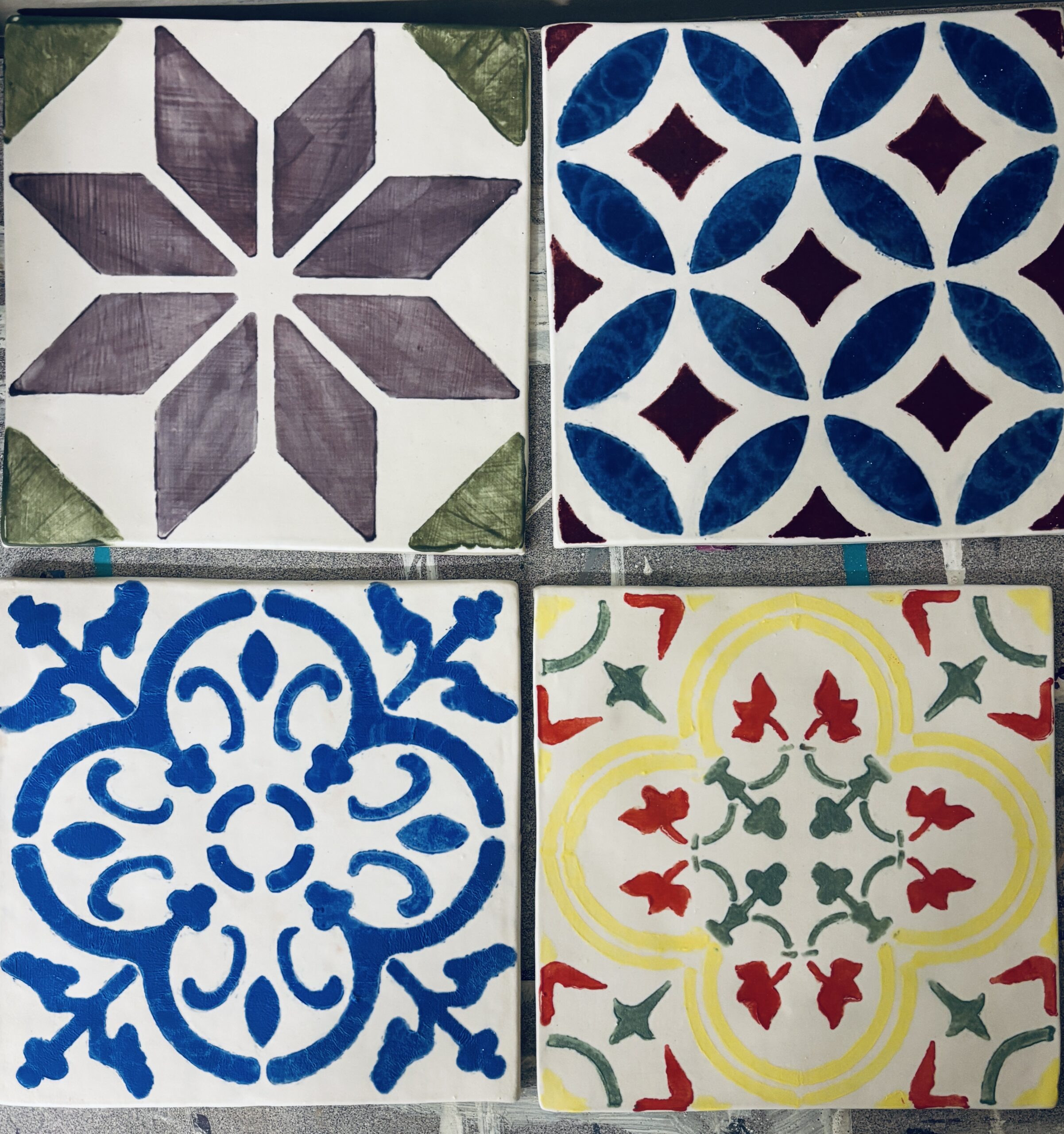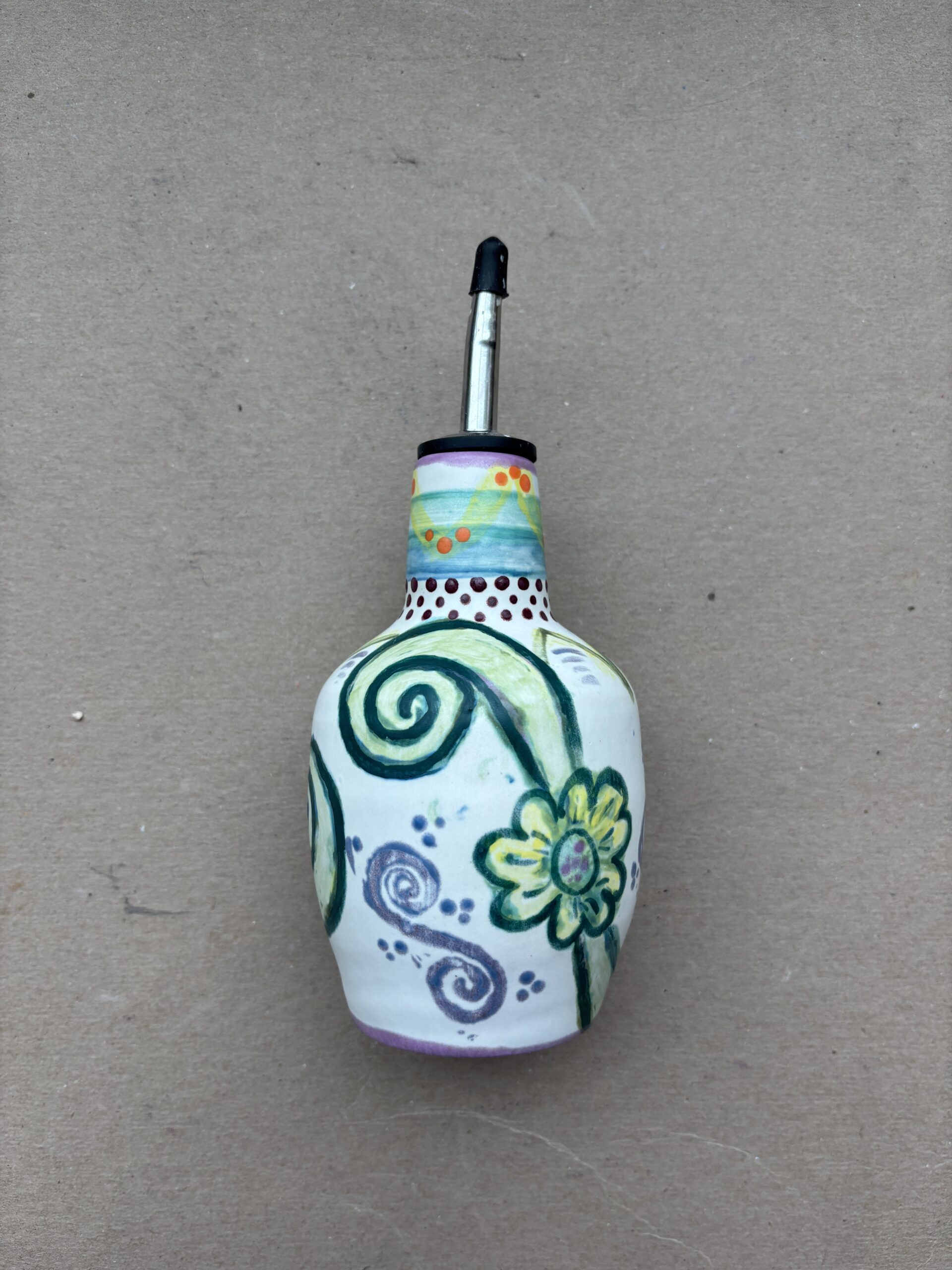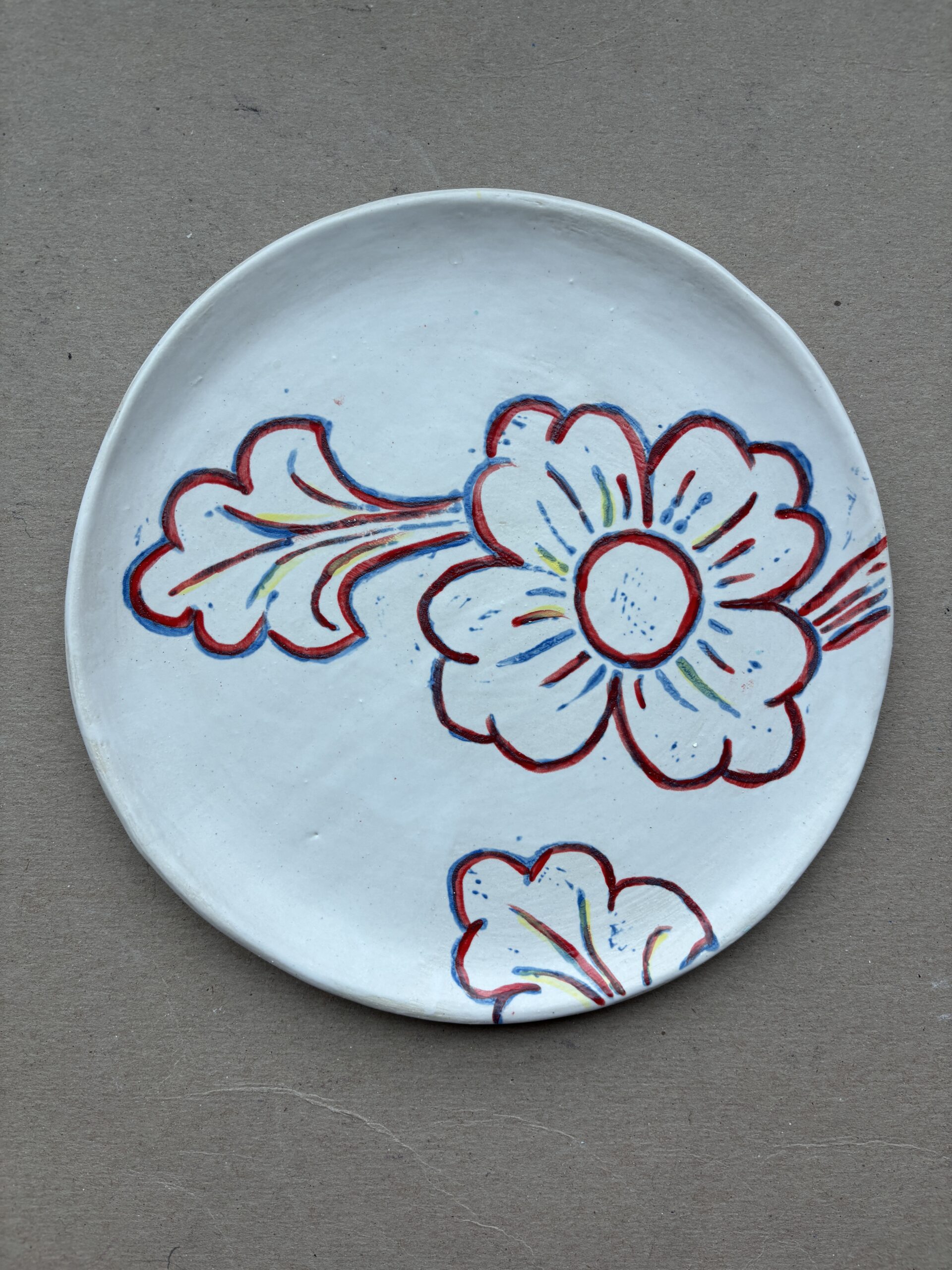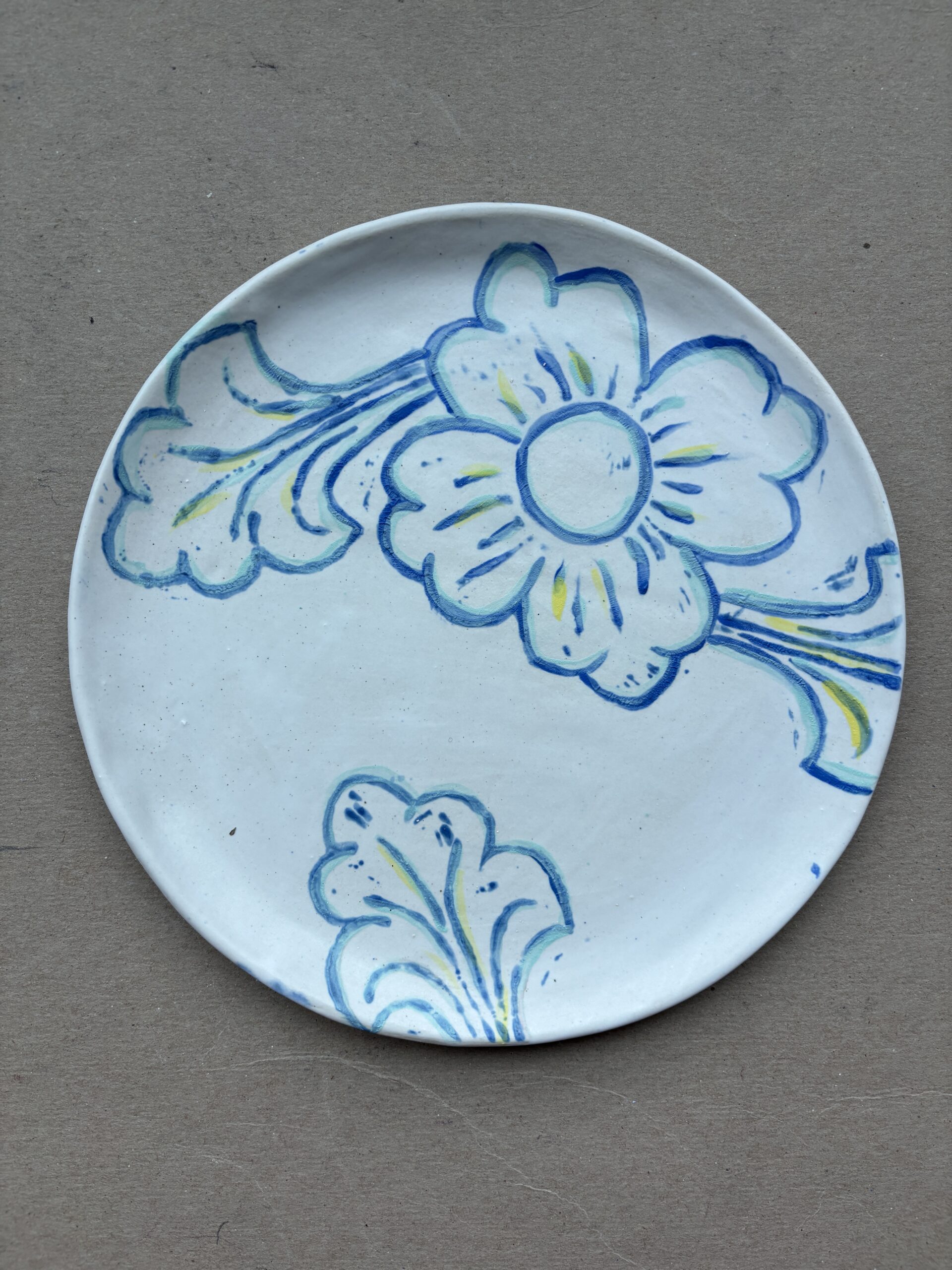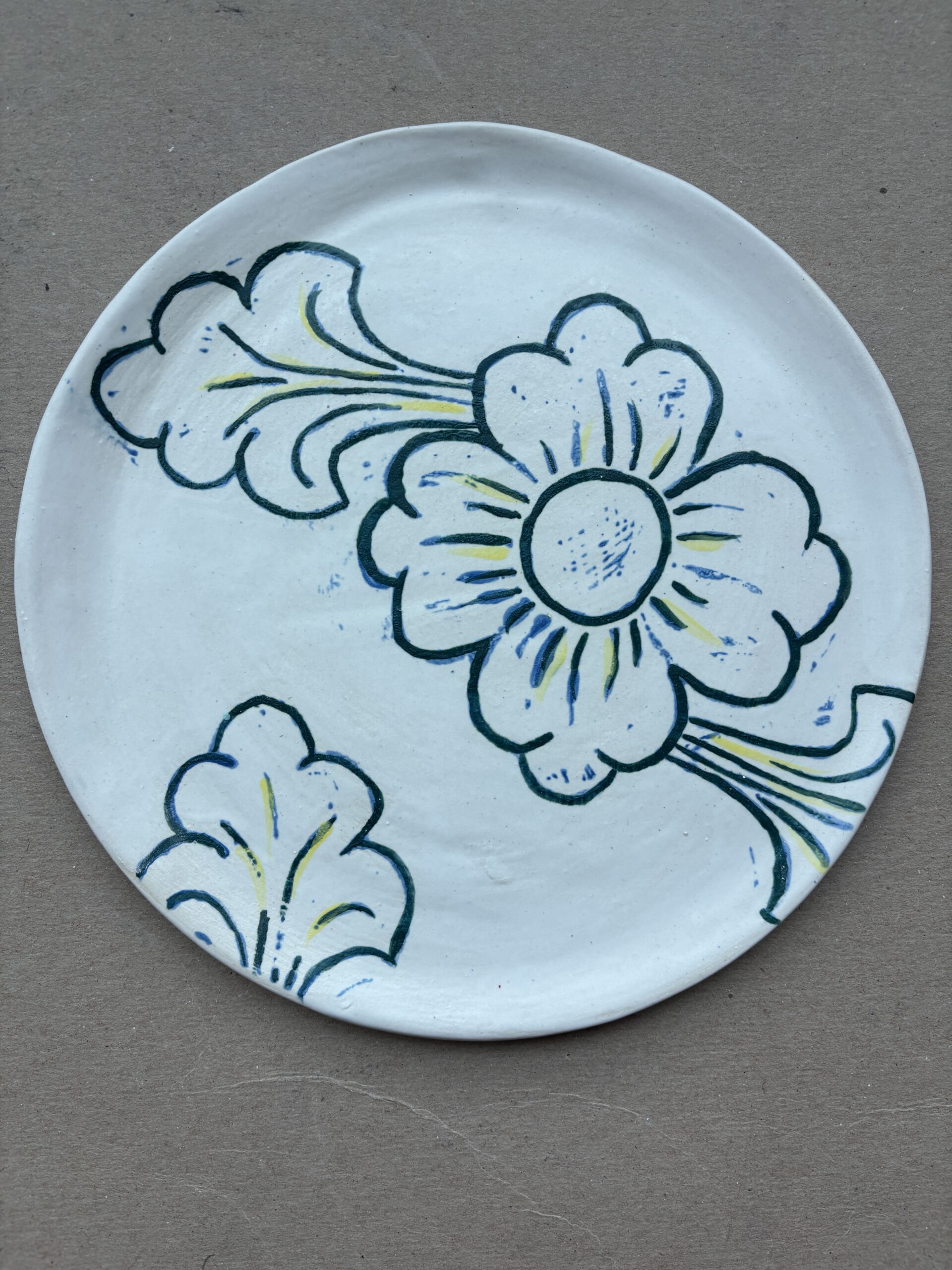Artist Statement
From a young age, I have always been drawn to language and art. In these subjects, I felt a strong connection with my peers, a sense of accomplishment in my projects, and pride in my work. I have been a creative and hands-on individual for as long as I can remember. I grew up sewing quilts, drawing in my sketchbook, and trying new crafts that inspired me. I have also been fortunate to travel extensively throughout Europe, gaining insight into diverse cultures and art. Over the past four years, I’ve developed much appreciation for how the arts can support healing, explore identity, creative expressions, and emotional well-being. In this process, I discovered a passion for ceramics.
Expressing and releasing emotions is essential to my creative process. The relationship I’ve developed with clay connects me to the materials of earth, making the experience of handbuilding and wheel throwing grounding and meditative. This collection reflects my time studying abroad in Spain, where I found inspiration through the intricate patterns and designs known as Mudejar, which blends Islamic and Christian influences. Ceramics and pottery are cathartic processes that allow individuals to capture and express memories, thoughts, and emotions within their artwork.
Thesis Abstract
This thesis explores and integrates the use of the Spanish design, Mudejar- the fusion of Islamic and Christian cultural art- within the field of art therapy. The use of the arts for healing in both Spanish and Muslim cultures has been practiced for centuries. This thesis proposes that incorporating Mudejar-inspired designs in hand-painted artworks can enhance mindfulness, foster self-expression, and cultivate a connection to a distinctive cultural perspective. Through the use of hand building, wheel throwing, and various tools, a collection of ceramic functional kitchenware inspired by Mudejar was produced. This process resulted in a collection that emphasizes the cultural significance of food as well as the role of traditional aesthetics, techniques, and the use of ceramics in therapeutic practices. The role of culturally significant art, designing aesthetics, and the creation of functional objects in art therapy is discussed with its limitations and future directions as it applies to this thesis.

